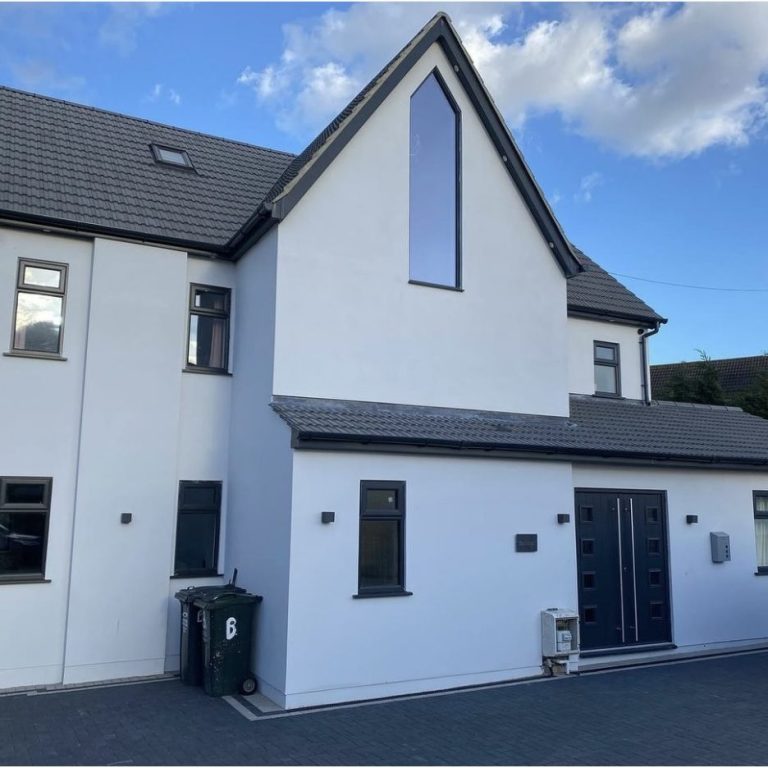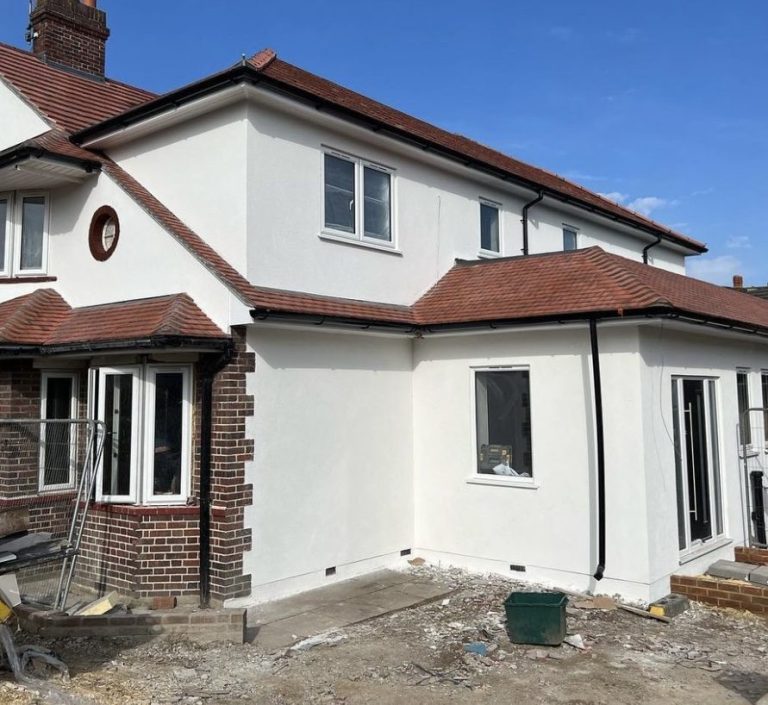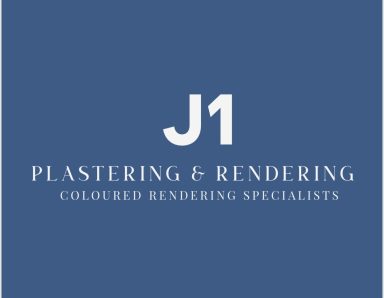
Sand & Cement (traditional render):
Sand & cement render is a traditional render finish that is mixed on-site and applied in multiple coats. The sand and cement, once applied, must then be left to cure for a period of weeks before being overcoated with masonry paint. This system is generally slightly cheaper from a materials point of view. However, it can be more susceptible to fail/crack, as it is not very flexible, and its performance is heavily reliant on the correct mixing of the materials, as it is not pre-mixed off-site in a modern, quality-controlled factory environment.
here at J1 we prefer to use a pre-mixed OCR (Ordinary Cement Render) render to meet the needs of this market segment, which is designed to help eliminate inconsistencies associated with site-mixed product.
Sand and cement render pros:
- Can be more cost-effective in materials.
Sand and cement render cons:
- Not flexible, has lower breathability, is harder to apply, and requires overpainting.
- Suitable for masonry substrates only.
The system’s durability is heavily reliant on the skill set of the applicator mixing the product correctly. Incorrect mix strengths and poor mixing practices can often lead to the deterioration of an existing building’s fabric, which must be considered when specifying the sand, cement, and lime mix ratios.
What does it cost:
The cost of sand and cement render can vary but generally, as a guide, it’s in the price range of £35 – £55per m2 (including labour and materials), depending on the location and size of the project. other costs to consider are scaffholding , removal of old render , skips etc

Monocouche:
There are a wide variety of monocouche renders available on the market,The key characteristic of monocouche render is that it is a through-coloured, thick-coat render. Monocouche render is very often compared to sand and cement render because it contains cement however, it is very different in terms of texture and characteristics.
Monocouche render tends to offer a chalkier finish than other renders. To provide the finished facade, the render is usually scraped to create a pitted effect. Available in a range of colours (natural and bright), it’s a very popular choice for homeowners who are looking to create a chalky, flat finish
Silicone Render vs Monocouche Render
While both silicone and monocouche renders are durable, silicone render has a slight advantage due to its flexibility. This trait helps it resist cracks caused by building movement. Monocouche renders, while robust and hard-wearing, can be more susceptible to cracks if applied to buildings that experience significant movements or vibrations.
In the UK, the average cost of monocouche rendering is around £55–£75 per square meter, including materials and labor. However, the price can vary depending on several factors, including scaffholding , skips , removal of old render

silicone thin coat:
Thin Coat Render (Silicone and acrylic renders)
Silicone and acrylic renders are usually called ‘thin coat renders’ because they’re applied in a very thin layer on top of a base coat that is applied with a reinforced fiberglass mesh. Thin coat render has the advantage of being very flexible whilst providing unrivalled weather resistance. Silicone and acrylic render systems are considered more premium and are generally more expensive as a render solution when compared to other render options. Thin coat systems are more commonly adopted for commercial projects, where a premium, long-lasting, durable product is required. Thin coat renders provide a minimum 25yr+ life expectancy.
Thin coat render pros:
- Thin coat render is a ready mixed, wet render that provides a consistent product that is ready to go straight out of the pack.
- Thin coat render is very flexible, providing good crack resistance and durability and has a vast range of colour choices.
- Having the render pre-coloured means that it can last longer, and eliminates the requirement for painting, drastically reducing maintenance costs.
- Silicone thin coat renders provide additional breathability if required.
Thin coat render cons:
- Thin coat systems take longer to apply – due to their multi-layer application as they require basecoat, primer, and topcoat applications.
- Thin coat renders are slightly more susceptible to weather damage during application and applicators should consider weather conditions, when planning for projects.
What does it cost:
As a guide, a silicone and acrylic render is the most expensive of the three systems – coming in somewhere in the range of £65 – £100 per m2 including labour and materials. Again, prices are a guideline and regional variations apply. These prices dont include hacking off old render, skips & scaffolding
©Copyright. All rights reserved.
We need your consent to load the translations
We use a third-party service to translate the website content that may collect data about your activity. Please review the details in the privacy policy and accept the service to view the translations.
